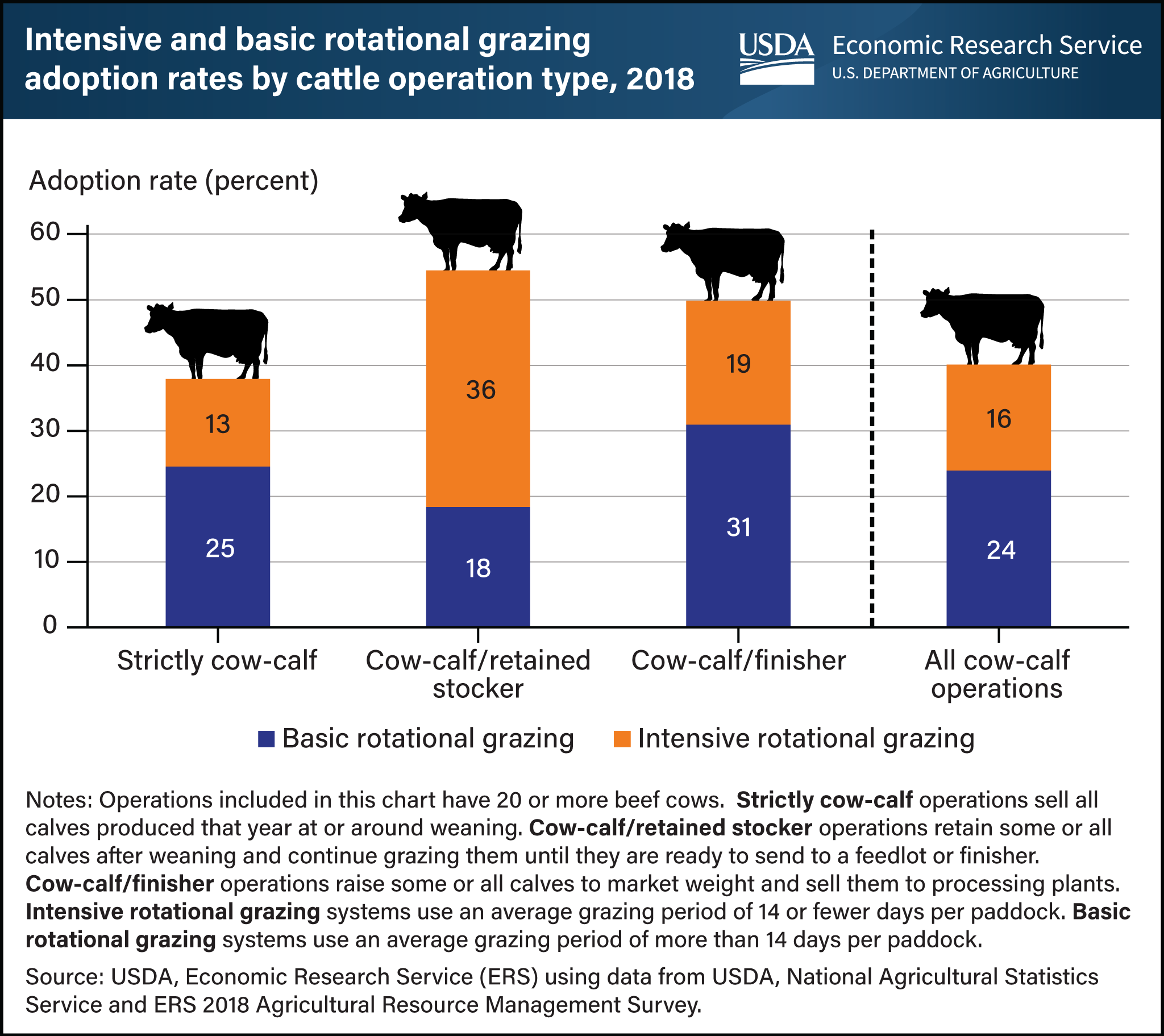About 40 percent of all cow-calf operations reported using rotational grazing in 2018
- by Christine Whitt
- 12/6/2022

Rotational grazing is a management practice in which ranchers rotate cattle through a series of paddocks. It is an alternative to continuous grazing in which cattle stay on a single pasture. About 40 percent of all cow-calf operations reported using a rotational grazing system, with cow-calf/retained stocker producers leading adoption. Retained stockers keep one or more of their calves through the initial feeder stage for later sale to feedlots. Based on data collected from the 2018 Agricultural Resource Management Survey (ARMS) Cattle and Calves Cost and Returns Report, 54 percent of retained stocker operations have adopted some form of rotational grazing. This adoption rate is more than the rate for strictly cow-calf producers, who sell all calves at or around weaning (38 percent), or retained finisher producers, who retain calves until market weight (50 percent). Retained stockers are much more likely to employ intensive rotational grazing systems, which use an average grazing period of 14 or fewer days per paddock, than strictly cow-calf operations and finishers. Across all forms of cow-calf operations, 16 percent of producers use intensive rotational grazing and 24 percent use basic rotational grazing (using an average grazing period longer than 14 days per paddock). The type of grazing system an operator selects can be part of managing forage production, forage quality, animal health, and environmental quality. This chart appears in the USDA, Economic Research Service report Rotational Grazing Adoption by Cow-Calf Operations, published in November 2022.

